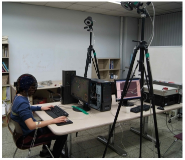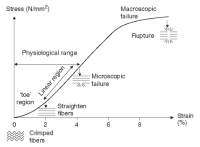
The purpose of this study was to determine how acute active pc-video game affects kinematic variables and muscle activities of adolescents. Fourteen middle school students(age: 15.9±0.7 yrs, height: 171.3±6.1cm, weight: 60.0±5.4 kg, right handed) who have no musculoskeletal disorder were recruited as the subject according to having experience in using the pc-video game for more than six months. Maximum angle, angular velocity, and muscle activity of the upper extremity were determined for each trial. For each dependent variable, a paired t-test was performed to test if significant difference existed between pre- and post a 60 minute active pc-video game(p<.05). This study found that one hour pc-video game hour may not affect on movement and ROM of the finger and the wrist, whereas it may have an effect on muscle activity of the upper extremity. It seems that repetitive movement pattern during an active pc-video game may hinder muscle activity of adolescents’ upper extremity. Part of the increase in musculoskeletal disorders is linked to the amount of time adolescents are allowed to play video games. This study found that an active pc-video game appears to have negative effects on the upper extremity muscles. Since wrist movements are continually repeated throughout the video game, carpal tunnel syndrome may possibly be caused by long-term exposure to video games.


The purpose of this study was to describe the epidemiology of Korean collegiate injuries during 2015. Collegiate student-athletes(n=167) in six sports (badminton, baseball, basketball, rugby, taekwondo, and volleyball) participating in all practices and games during pre-season, in-season, and post-season were tracked via the injury surveillance system(rate, location, type, and cause of musculoskeletal injury). Injury rate for 1000 athlete-exposure(AE) and 1000 time-exposure(TE) were calculated with 95% confidence intervals(CI). We captured a total of 961 injuries, a rate of 19.29/1000 AE(95% CI=18.07, 20.51) and 0.16/1000 TE(95% CI=0.15, 0.17). Commonly injured body locations were knee(17.5%, n=168), thigh(16.1%, n=155), ankle(12.1%, n=116), and finger(8.4%, n=81). Injuries were mostly diagnosed as contusion(40.1%, n=385), ligament sprain(21.1%, n=203), and laceration/abrasion/skin injury(13.5%, n=130). Common causes were contact with another athlete(44.6%, n=429), contact with moving object (12.7%, n=122), overuse/atraumatic(11.9%, n=114), and contact with non-yielding object(9.4%, n=90).

Vertical jumping is one of basic skills in many sports activities. Maximizing vertical jumping performance requires large “power”, which implies that one should generate force against the ground in a short period of time. In order to gain better understandings of how human musculo-skeletal system mechanically functions to achieve maximal power in vertical jumping, the proposed “dynamic catch” mechanism, one of “power amplification” mechanisms through the role of muscle-tendon interaction, was specifically reviewed base on the morphological and mechanical characteristics of lower limb muscle-tendon complex. By understanding basic structural and functional features of human muscle-tendon interaction, this review aims to provide basic scientific information for training and rehabilitation and promote convergence researches in related areas, such as sports biomechanics, mechanical engineering, and sports medicine.


